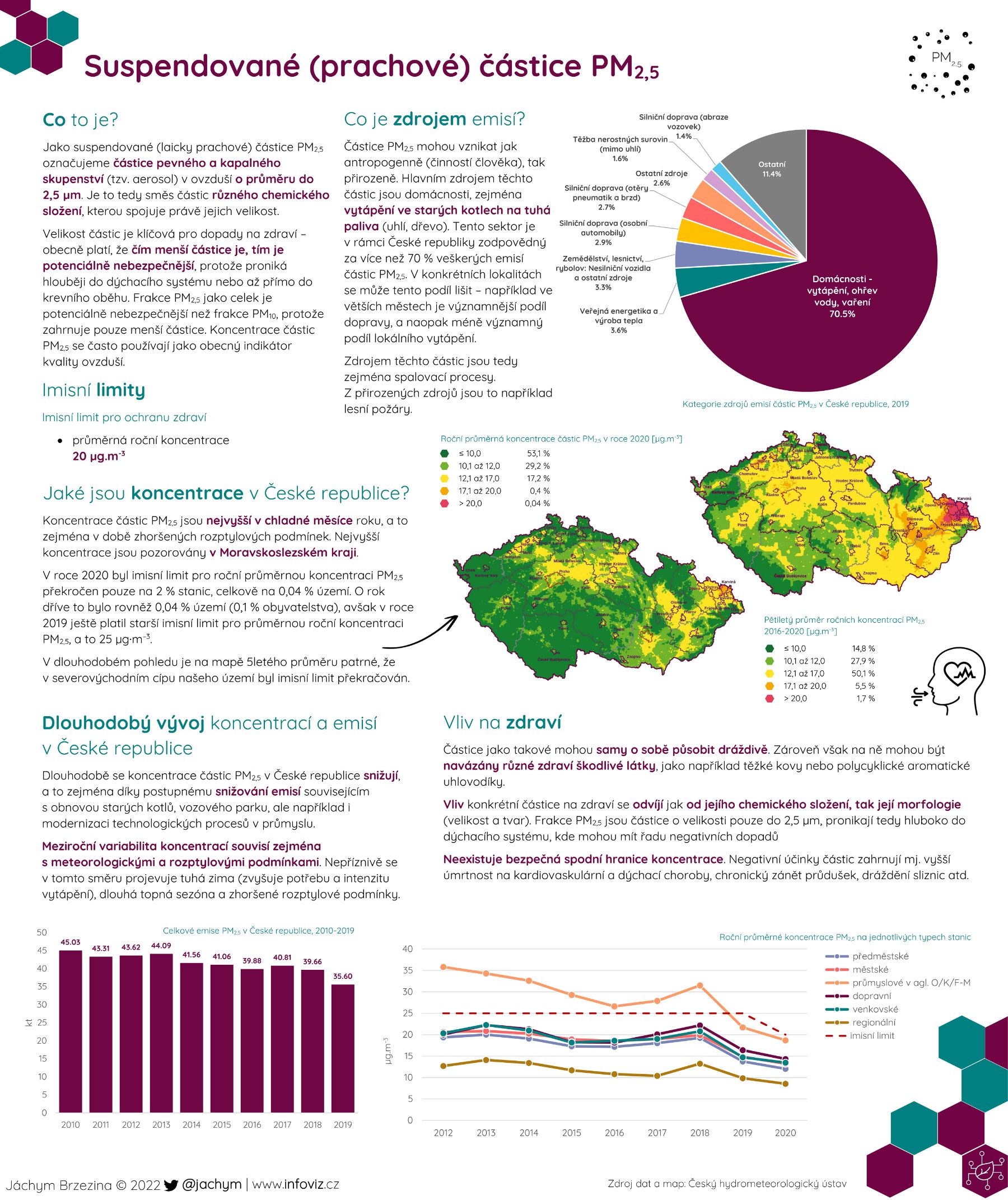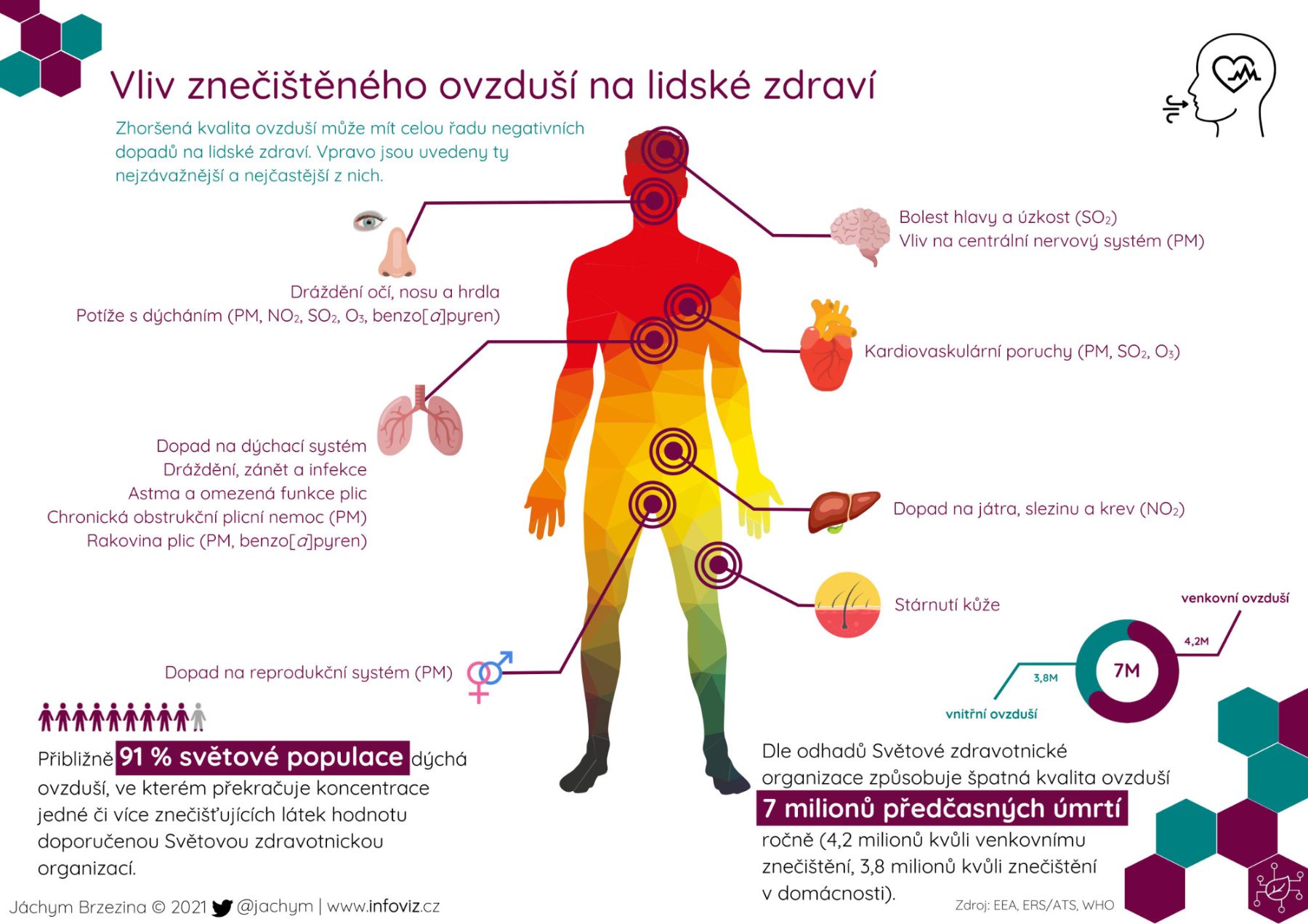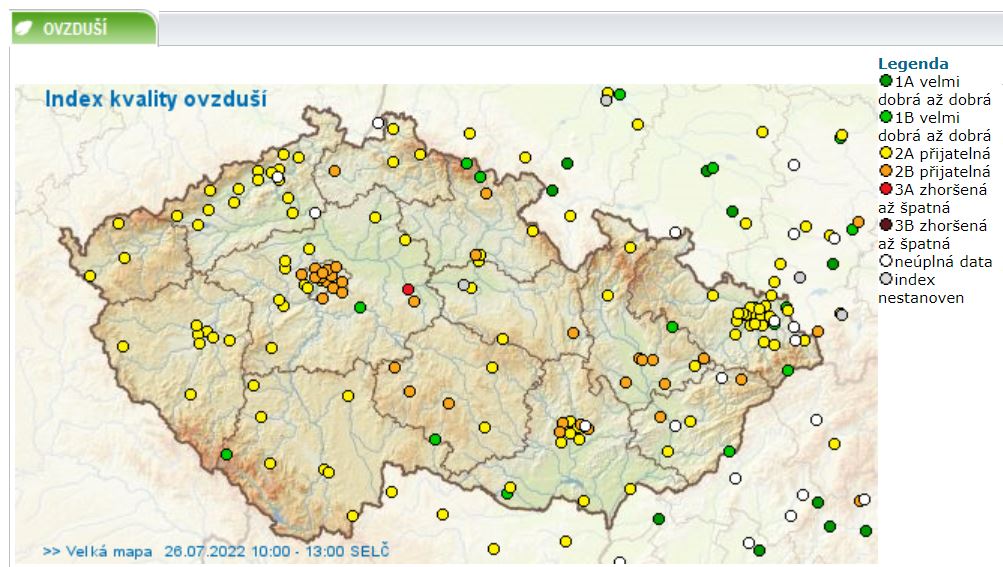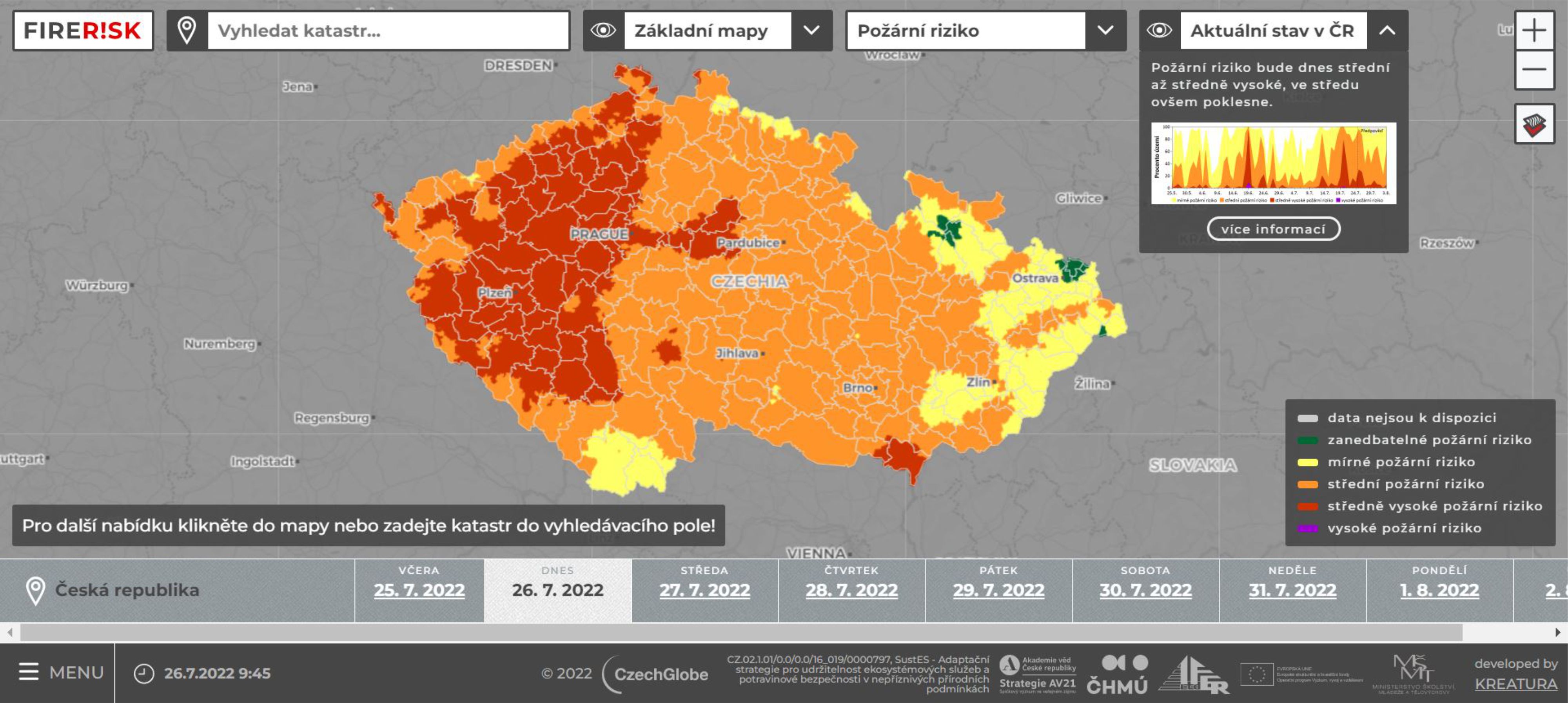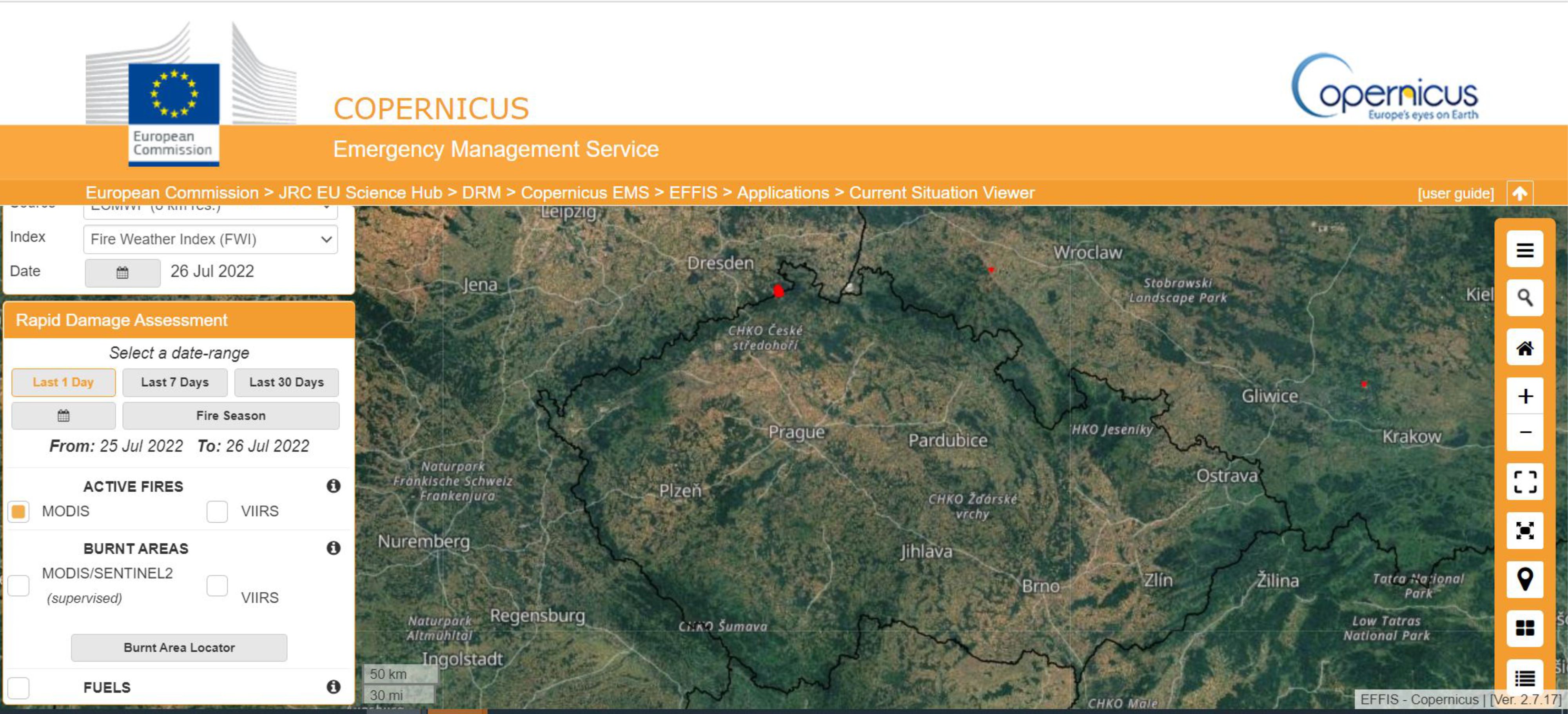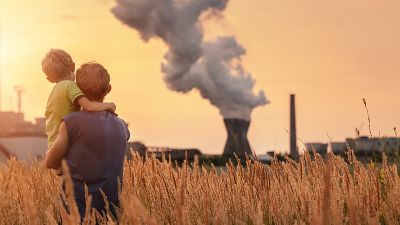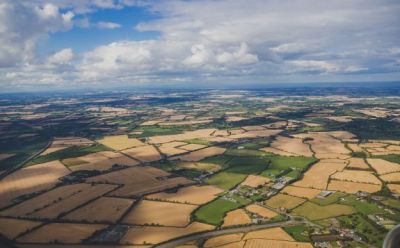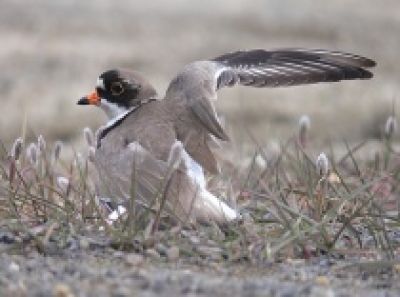Earlier this week, much of the Czech Republic woke up to the acrid smell of smoke. Not from a fire in the neighbourhood or one town over but more than a hundred kilometres away: in Hřensko and the Bohemian Switzerland National Park. “The spread of the smell and dust particles even over long distances was caused by the wind, which changed in intensity and direction during the night,” meteorologist Michal Žák, from the Department of Atmospheric Physics at the Faculty of Mathematics and Physics of Charles University, explained.
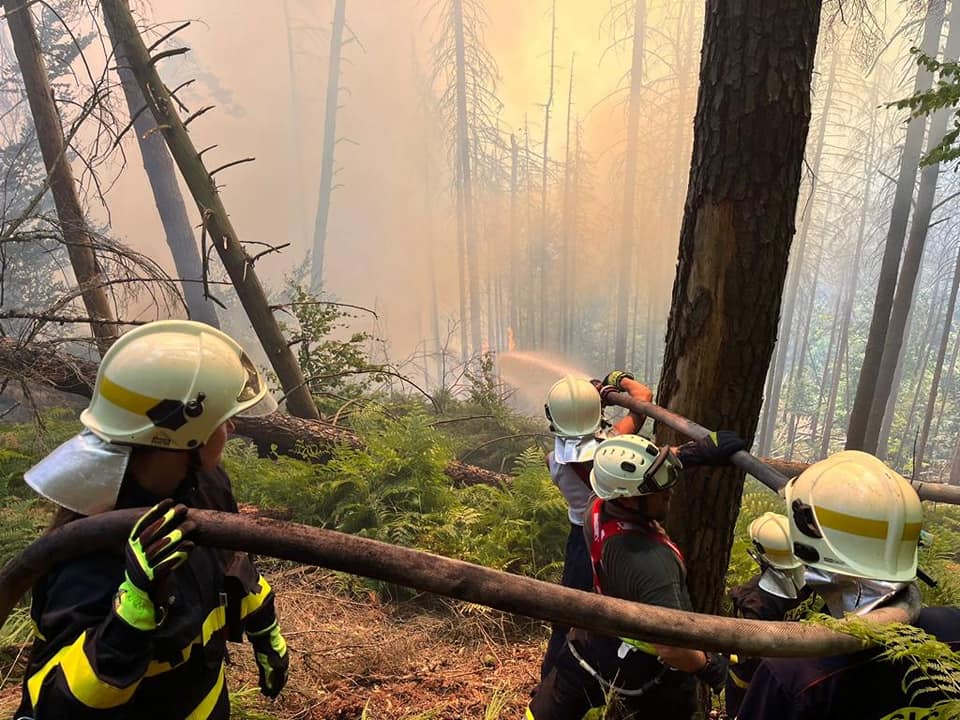
Firefighters tackle the massive forest fire in Hřensko in the Bohemian Switzerland National Park. Photo: Fire Brigade of the Czech Republic.
The scale of the fire – and destruction in its path – shocked the country. It has destroyed thousands of hectares of forestland, forced the evacuation of inhabitants from homes in surrounding villages, and seen an around the clock response by firefighters trying to get the fire under control. Seven helicopters have been helping in the fight; Italy also provided two special planes to help.
Until now, forest fires of similar scope and devastation filled headlines from abroad. No more: a major fire has been burning in the Bohemian Switzerland National Park since Sunday. Hundreds of firefighters have been working around the clock to rein in the fire, which has cut through thousands of hectares. Czech news sites reported from such picturesque sites as the natural rock formation Pravčice Gate. Much of the country continues to watch online feeds to see how the situation is developing.
Sadly, the conditions for just such a fire were more than favourable, says Michal Žák, a meteorologist and vice-dean for public relations at Charles University’s Faculty of Mathematics and Physics. He told Forum more:
“The area has been dry for a long time; there have also been very high temperatures in recent weeks, and at the same time there has been no significant rainfall… In addition, the wind helped the fire to spread. On Sunday, it was still not very strong, but on Monday, south and south-eastern winds picked up significantly.”
The biggest complication, he adds, came during the night on Tuesday when the wind changed direction as the result of a cold front, in some places up to 180 degrees, and above all it intensified. To this we must add the complicated terrain, where local, so-called orographic intensification can occur,” the associate professor says.
The current weather forecast has not provided much in the way of hope, either. “In terms of precipitation, we don't have much good news. Significant precipitation will not appear in the near future and light showers will not affect the situation. However, temperatures will be lower in the next few days, which will at least be more pleasant for the firefighters. As far as the wind is concerned, I am afraid the situation will not be too favourable… but the wind will become lighter at night on Thursday,” Žák, who viewers will know on Czech Television, explains.
"Of course, we don't know how long the fire will burn, how quickly firefighters will be able to bring it under control. But it will probably take a few more days. In the longer term, heavier rainfall could arrive overnight which could help.”
Acrid smell of smoke across the country
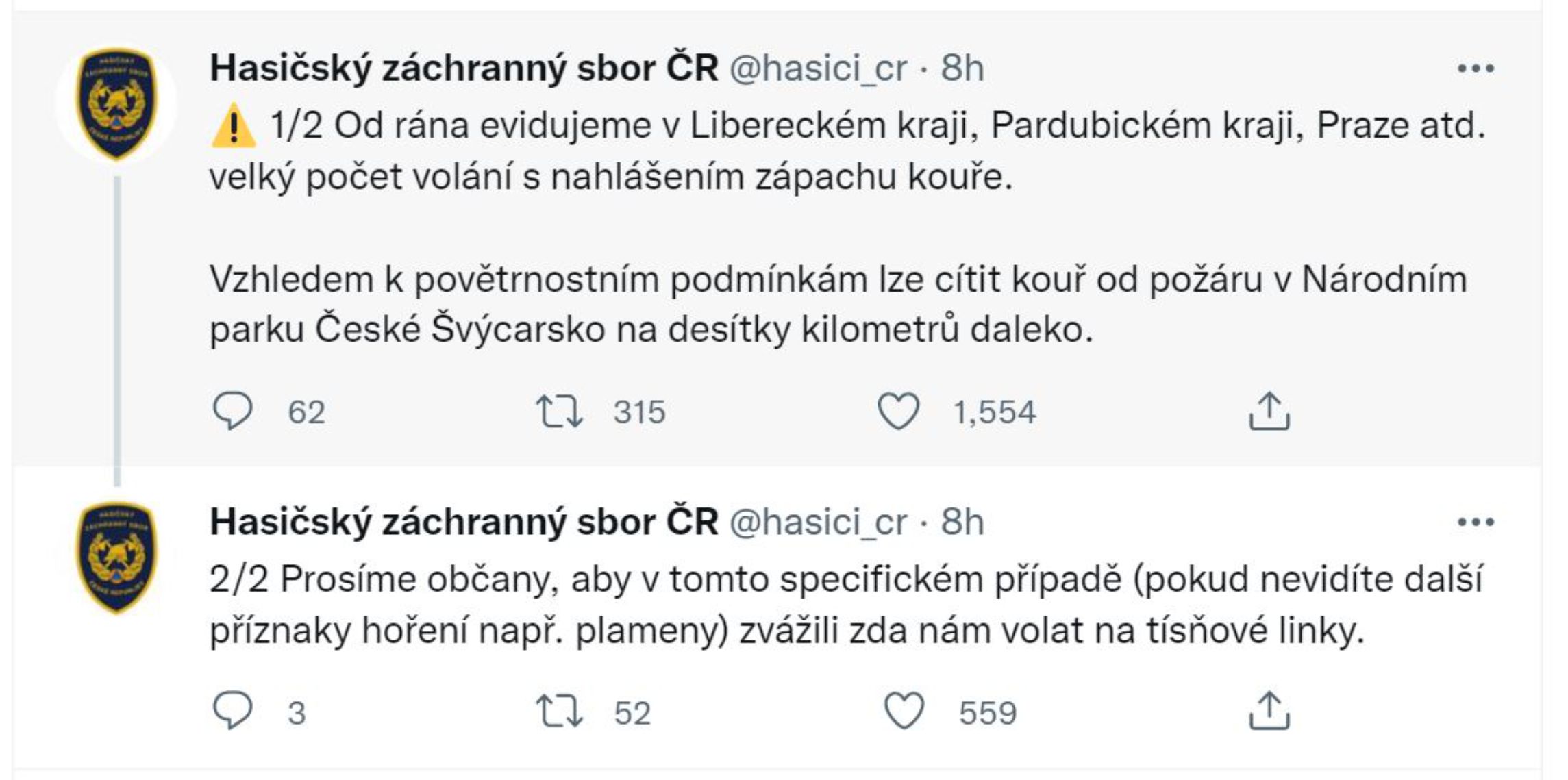 On Tuesday, Czech residents experienced first-hand the smell of smoke and dust particles that had spread from the fire over distances of tens of kilometres. The aforementioned cold front and the wind were to blame: “The night wind was blowing in the lower layer of the atmosphere, roughly one kilometre, and was quite intense, so the smell and fumes were well dispersed widely and could be smelled even in central and eastern Bohemia or the Highlands. Whereas yesterday, the smoke was more rising in altitude,” explains the meteorologist Increased concentrations of dust particles were also recorded by measuring instruments belonging to the Faculty of Mathematics and Physics in Prague's Troja district around 7 am.
On Tuesday, Czech residents experienced first-hand the smell of smoke and dust particles that had spread from the fire over distances of tens of kilometres. The aforementioned cold front and the wind were to blame: “The night wind was blowing in the lower layer of the atmosphere, roughly one kilometre, and was quite intense, so the smell and fumes were well dispersed widely and could be smelled even in central and eastern Bohemia or the Highlands. Whereas yesterday, the smoke was more rising in altitude,” explains the meteorologist Increased concentrations of dust particles were also recorded by measuring instruments belonging to the Faculty of Mathematics and Physics in Prague's Troja district around 7 am.
“The data showed beautifully the biggest peak in the morning hours today, with the shower and the change in wind direction the concentration of dust particles dropped again,” Žák explains.
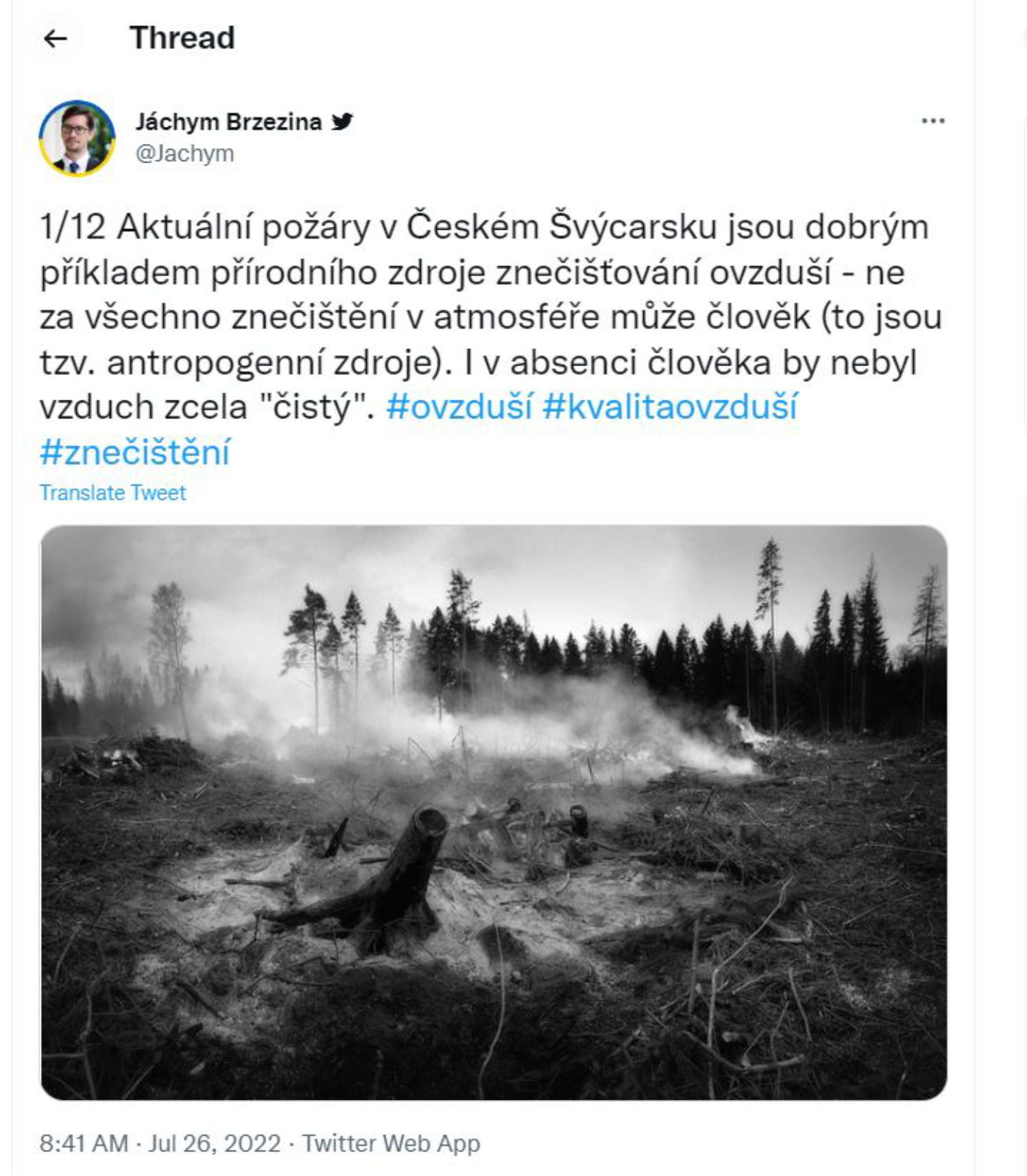 Jáchym Brzezina, head of the air quality department at the Czech Hydrometeorological Institute Brno, discusses in a Twitter thread, the current fires in Bohemian Switzerland are a prime example of a natural source in air pollution.
Jáchym Brzezina, head of the air quality department at the Czech Hydrometeorological Institute Brno, discusses in a Twitter thread, the current fires in Bohemian Switzerland are a prime example of a natural source in air pollution.
In forest fires, the supply of fuel or air cannot be controlled, so this is so-called imperfect combustion, which produces a number of pollutants. Emissions from forest fires contain mainly smaller particles, known as PM2.5, which are potentially more hazardous to health than PM10. In general, the smaller the particle, the deeper it goes into the respiratory system. The infographic on the Infoviz website summarises more:
Another infographic from the Infoviz website describes the impact of air pollution on human health:
Attention!: Danger of outbreak of fires
“For us, in terms of climate change, we don't study the actual fire behaviour, but we do model climate conditions and favourable conditions for fire weather. In other words, how suitable the weather will be for wildfires to occur. It can be expected that the number of days when conditions are favourable for their occurrence will increase in the future. Of course, this does not mean that a fire will always break out, but that there is an increased risk,” notes Michal Žák.
“The weather is the main input factor, but it also depends on the state of the vegetation. In the Czech landscape, the vegetation is dense, which, when it dries out, represents a large amount of combustible biomass. For example, in the dry areas of the Mediterranean, the vegetation is sparse, for example, grass burns quickly and has nothing else to burn. This is different in the Czech Republic.”
Every such incident increases a wave of interest. “Expert studies have been warning about these risks for a long time, and have even suggested possible measures. It's more about retaining water in the landscape than protecting against fires, but that may be a secondary consequence.”
What is the current situation, what is the risk of wildfires where in the country and where are fires burning right now? Information is continuously provided by various expert sites online, including the Czech Hydrometeorological Institute (ČHMÚ), which monitors the current air quality and fire risks.
Czechs continue to monitor developments even as firefighters, with help from abroad incoming, battle to get the blaze under control to be able to fully put it out.
A nebezpečí požárů sleduje i specializovaný web firerisk.cz:
The EFFIS (European Forest Fire Information System):



